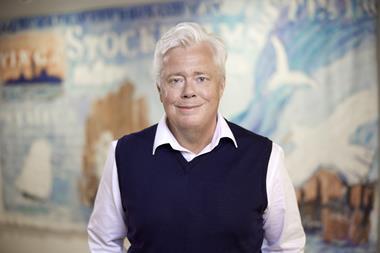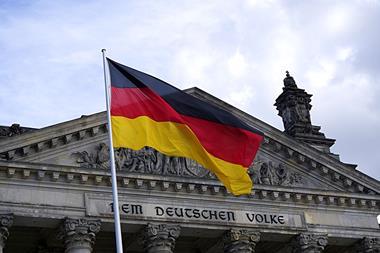The past year has seen quite a few changes in Danish pension provision, but the tax issue still lingers in the minds of the pensions community, says Forsikring & Pension
The ‘Folkepension’ is administered by the state and is financed on a pay-as-you-go basis out of general tax revenues. No earmarked contributions are paid to the financing of the scheme. A person is eligible to the flat-rate social pension when he or she reaches the age of 67 (this will be lowered to 65 from July 1, 2004).
Part of the social pension is dependent on contemporary income from, for instance, occupational and private pensions.
In addition to the ‘Folkepension’, there is the compulsory, statutory Danish Labour Market Supplementary Pension (ATP). This is managed by a separate funded insurance scheme managed by representatives of the unions and the employers
With effect from January 1 1998, coverage under the ATP scheme has been extended to include a number of persons not presently employed – then the state pays part of the contribution.
At the earliest, the pensioner is paid on reaching the age of 67. It is estimated that close to 99% of future pensioners will receive some kind of benefit from the ATP.
Contributions to the ATP are tax deductible. Pension benefits from the ATP are subject to ordinary income tax and the spouse and orphan’s lump sum pensions are subject to a tax of 40%.
In 1998, a temporary extra ATP scheme was introduced. All employees, self-employed, recipients of unemployment benefit and social cash benefits were charged 1% of their income to the ATP. This scheme, with some alterations, was made permanent this year.
An early retirement scheme pays out a pension to persons who retire between the age of 60-65. Disabled persons are eligible to a special disability pension. As the early retirement scheme has been increasingly popular and costly, the rules for eligibility have been tightened and the benefit increased for persons postponing retirement to the age of 62 for those born after July 1, 1939.
The 2nd pillar
The private occupational pension schemes in Denmark are based on either collective labour market agreements or agreements in the individual companies. Pension fund schemes cover well-defined categories of professionals. Schemes in insurance companies are either for special sectors or company schemes. All pension promises have to be funded no matter what body of administration is chosen.
Today, approximately 80% of the work force is comprised by an obligatory
occupational pension.
Contributions and benefits
The contributions have been raised regularly as part of the collective bargaining on the labour market and for both types of schemes the contributions are now at a level of 5 to 6% of the salary – the aim is typically to reach a contribution rate of 9 to 12%.
In the older schemes, primarily designed for employees in the higher income brackets, the contribution is usually 12-15%. For both the new and the old schemes two thirds of the contribution is paid by the employer and one third by the employee.
The size of the benefits from occupational pension schemes varies considerably, depending on the contributions paid. Most schemes, when combined with state pension, aim at providing 60 to 70% of final income. In addition, most schemes provide a lump-sum payment at retirement.
Contributions to pension schemes are normally tax deductible. For contributions to lump-sum schemes a maximum deductible contribution exists. Annuity payments are taxed as personal income and lump sum payments are taxed at 40%. The tax treatment of occupational pension and private individual pensions are the same.
The return on certain assets in pension schemes is subject to a real interest tax, where the rate is fixed every year on the basis of the level of return and the rate of inflation in order to limit the real return on pension savings to 3.5%.
From next year the real interest tax will be replaced by a pension return tax with a fixed tax rate of 26% to be levied on the return on most assets owned by pension institutions, except shares.
Company pension funds
Company pension funds constitute 4.3% of the total assets in life insurance companies, industry-wide pension funds and company pension funds. In Denmark similar rules
and regulation applies to company pension funds as to life insurance companies and industry-wide pension funds. Also pension promises in company pension funds must be fully funded.
Taxation and pension guarantees
As mentioned above, the taxation of the return of pension saving has recently been altered. In combination with the decrease in interest rates, this implies an increased taxation of pension savings. As most Danish pension funds and insurance companies have guaranteed certain benefits calculated at a higher interest rate (5%) than the present, the increased taxation might jeopardise the possibilities of the pension institutes to fulfil these guarantees.
The politicians did not anticipate this effect when the amendments were passed in parliament, even though the association made a big effort to point out the consequences of the proposed amendments. The legal adviser to the government has subsequently concluded that the guarantees were issued of companies under strict supervision of a public body. Therefore, it is the responsibility of the government to make sure, that regulation is not changed in a way that makes it impossible for the companies to fulfil the guarantees.
The association is now having talks with the responsible minister for the purpose of easing the taxation in case the new taxation regime influences the fulfilling of the guarantees issued by the pension institutions. The minister has announced that she is willing to change the law this autumn if necessary. How this potential amendment will be formulated is, so far, not known.
The Danish Pension Fund Associations
Full name of Association: Forsikring & Pension
(in English: The Danish Insurance Association)
Contact Name: Anne Seiersen
Address: Forsikringens Hus, Amaliegade 10, DK-1256 København K
Telephone: + 45 33 13 75 55
Facsimile: + 45 33 11 23 53
Email: fp@ForsikringensHus.dk
Full name of Association: Foreningen af Firmapensionskasser
(in English: Association of Company Pension Funds)
Contact Name: Frank Richard Andersen, Chairman
Address: c/o Unilever Danmarks Pensionskasse,
Stationsparken 25, DK-2600 Glostrup
Telephone: +45 43 28 41 00
Facsimile: +45 43 44 45 35
Email: Richard-FrankAndersen@unilever.com
Denmark
Population: 5.3 million January 1, 1998
Population aged: 18-64 years: 3.4 million
Population over: 65: 791,468
Retirement assets: Dkr l,079bn, 1997
There has been an increase of 14% in the total funded retirement assets from 1997-1998
In Denmark, pension funds and insurance companies are both subject to the insurance directives. As a consequence, the Danish Insurance Association and the Federation of Labour Market Pension Schemes merged in 1997.
The association’s main activity is to co-ordinate the opinions of the industry and influence and negotiate with the relevant politicians and civil servants. It also monitors the political developments and proposals for amendments of the regulation of pension institutions and the treatment of pension savings.
The association often cooperates with the Danish Financial Supervisory Authority to analyse different questions of mutual interest. Currently, there is a major issue of how to change the accounting rules for pension funds and life insurance companies in order to change the valuation method of assets and liabilities from book to fair value. Another big issue, having effect from July 1 this year, has been the statutory transition to the use of unisex calculation bases in compulsory occupational pension schemes.
There are around 60 company pension finds in Denmark and one third of these are members of the association company. In relation to the specific company pensions regulations, the Association’s main tasks and subjects are similar to those of the Danish Insurance Association and a well operating cooperation exists between the two organisations.












No comments yet